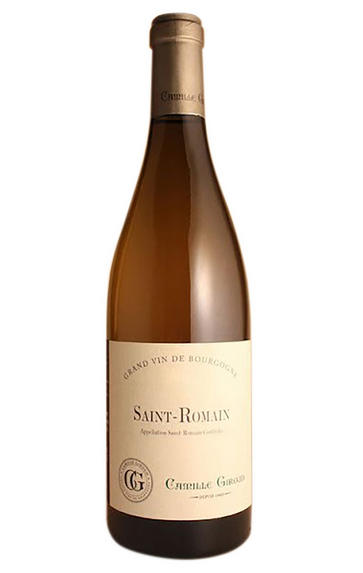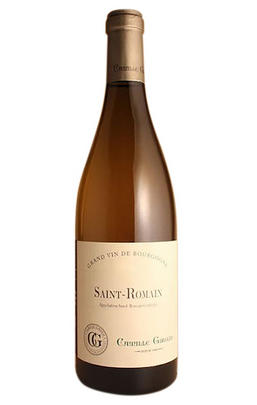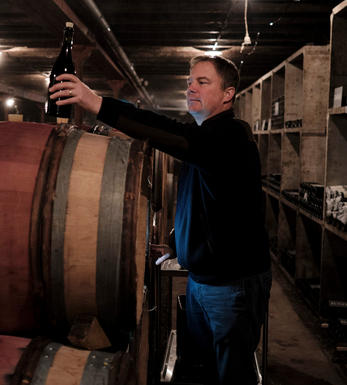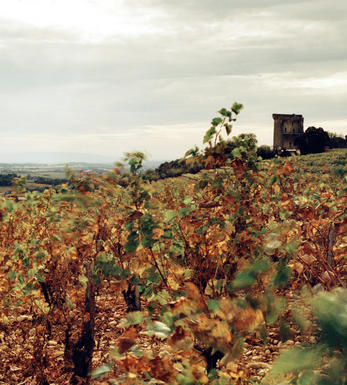
2020 St Romain, Camille Giroud, Burgundy

Critics reviews
Fine pale lemon and lime. It is very clean and clear cut, yet with a little sunshine. Some yellow plum notes are on top of a fresh apple base; it is medium-bodied, a useful mineral thread and good length. More depth than the Santenay. Very promising.
Jasper Morris MW, InsideBurgundy.com (October 2021)
Smoky aromas of Granny Smith apples, citrus and mineral reduction are trimmed in just enough wood to notice. There is fine intensity to the focused and well-detailed flavours that also exude evident salinity on the youthfully austere, dry and refreshing finale.
Drink from 2024 onward
Allen Meadows, Burghound.com (June 2022)
The 2020 Saint-Romain Sous La Château has a fresh, lemon verbena-scented bouquet that gains intensity with aeration. The palate is well balanced with a fine bead of acidity, fresh and vibrant with a saline finish. Taut and fresh, this is another white that comes recommended.
Drink 2023 - 2033
Neal Martin, Vinous.com (December 2021)
About this WINE

Maison Camille Giroud
Established in 1865, Maison Camille Giroud has a rich heritage rooted in Burgundy’s winemaking tradition. Initially a specialist négociant, they sourced wines from esteemed growers across the renowned Côte d’Or region, ageing them meticulously in their cellars for decades to achieve peak maturity.
In 2001, a consortium, including Napa Valley winery owner Ann Colgin and wine investors, took over, aiming to blend tradition with modern techniques and a terroir-driven approach. This led to innovations, like wooden presses and open vats, under the dynamic winemaker David Croix.
Most wines continued to be crafted from carefully selected grapes, many from old vines. Their commitment to natural winemaking practices, including native yeast fermentation and minimal intervention, set them apart.
In 2016, Carel Voorhuis continued the legacy of crafting pure, terroir-driven wines, maintaining Maison Camille Giroud’s reputation for excellence in Burgundy.

St Romain
Until 1947 St Romain was part of the Hautes Côtes de Beaune, the vineyards being set back from the main Côte and mostly at higher elevation (around 300 to 400 metres above sea-level). But there is enough class in the mineral white wines (which make up two-thirds of production), and charm in the lightish reds in a warm year that the village is worthy of its own appellation, covering just 98 hectares. The best wines offer remarkable value.
Recommended producer: Alain Gras

Chardonnay
Chardonnay is often seen as the king of white wine grapes and one of the most widely planted in the world It is suited to a wide variety of soils, though it excels in soils with a high limestone content as found in Champagne, Chablis, and the Côte D`Or.
Burgundy is Chardonnay's spiritual home and the best White Burgundies are dry, rich, honeyed wines with marvellous poise, elegance and balance. They are unquestionably the finest dry white wines in the world. Chardonnay plays a crucial role in the Champagne blend, providing structure and finesse, and is the sole grape in Blanc de Blancs.
It is quantitatively important in California and Australia, is widely planted in Chile and South Africa, and is the second most widely planted grape in New Zealand. In warm climates Chardonnay has a tendency to develop very high sugar levels during the final stages of ripening and this can occur at the expense of acidity. Late picking is a common problem and can result in blowsy and flabby wines that lack structure and definition.
Recently in the New World, we have seen a move towards more elegant, better- balanced and less oak-driven Chardonnays, and this is to be welcomed.


Buying options
Add to wishlist
Description
The wines of St Romain, atop the valley behind Auxey-Duresses and Monthélie and nestled into a limestone scarp, are increasingly in vogue. Their piercing freshness comes from the commune’s cool position and geology. This is arguably the village’s best site, steeply sloped and facing south-east. With vibrant, lime-scented and citrus notes, this has a taut, crisp finish.
Drink 2022 - 2029
Berry Bros. & Rudd
wine at a glance
Delivery and quality guarantee